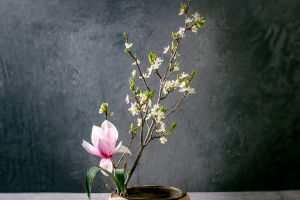The daisy, a small flower that quietly blooms during the transition between spring and summer.
Not only wins people's affection with its simple yet beautiful appearance but also draws attention due to its unique biological characteristics and extensive applications.
This article will delve into the biological traits of the daisy, its ecological value, and its cultural and medicinal uses.
1. Biological Characteristics
The daisy is a perennial herbaceous plant, and its name comes from the Old English "dægesege," meaning "day's eye," due to its close relationship with sunlight and its blooming pattern.
The flower exhibits typical Asteraceae (daisy family) traits: a yellow central disc surrounded by white or pink petals. The color and shape of the petals can vary depending on environmental and planting conditions.
The plant typically grows between 15 to 30 centimeters in height, with a stem and basal leaves that are lance-shaped or oval with serrated edges. The daisy has a relatively shallow root system, making it suitable for growing in meadows, flower beds, and along roadsides.
2. Ecological Value
The daisy plays a significant role in ecosystems. It serves as a food source for many insects, especially bees and butterflies.
These insects not only pollinate the daisy but also enhance biodiversity within the ecosystem. Additionally, the daisy’s widespread distribution and adaptability make it a crucial component of meadow ecosystems, helping to maintain soil stability and health.
3. Symbolic Significance in Culture
The daisy is cherished not only for its beauty but also for its symbolic representation of purity and hope in various cultures.
In Western culture, the daisy is often used to convey purity, innocence, and new beginnings. Its simplicity and purity make it a popular flower for occasions such as the birth of a baby, first love, and friendship.
In literature and art, the daisy frequently appears. Many poems and paintings depict the daisy’s beauty as a symbol of natural beauty and unblemished innocence. Its presence seems like a piece of art from nature, conveying a simple yet genuine sense of beauty.
4. Medicinal Applications
Beyond its cultural symbolism, the daisy also plays an important role in medicine. In traditional herbal medicine, the daisy has been used to treat various ailments, including skin conditions, respiratory infections, and digestive issues.
Its petals and leaves contain a wealth of phytochemicals, such as flavonoids, phenolic acids, and essential oils, which possess antioxidant, anti-inflammatory, and antibacterial properties.
Modern medical research has confirmed the medicinal value of the daisy. For instance, daisy extracts are used to prepare anti-inflammatory drugs and skincare products, aiding in reducing skin inflammation and promoting wound healing.
5. Cultivation and Care
Growing daisies is relatively simple and suitable for home gardeners. They are not particularly demanding in terms of soil but thrive best in well-drained soil. The optimal environment for growing daisies is full sunlight, though they can also grow in partial shade. Daisies can be propagated by seeds or by dividing the plants.
In terms of care, regular watering and fertilizing can help daisies grow better. While daisies are fairly resistant to pests and diseases, it's still important to check for any signs of problems. Annual pruning in spring can encourage more vigorous growth.
Conclusion
The daisy is renowned for its unique beauty, ecological value, cultural symbolism, and medicinal applications. This article aims to provide a deeper understanding of the daisy, and perhaps the next time you see one, you will appreciate this little wonder of nature even more.


